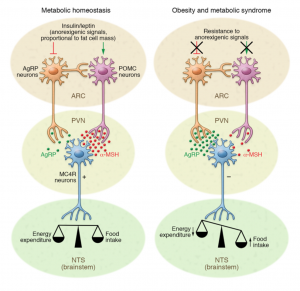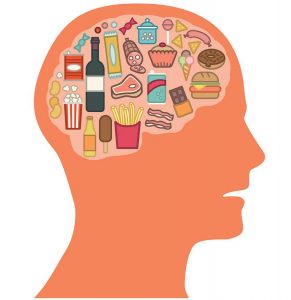
Just like the average American’s waistband, the prevalence of obesity is growing in America. Dr. Cynthia Ogden, a CDC epidemiologist, published the results of a study of weight in the United States concluding that 31% of adults are obese and 15% of children and teenagers age 6-19 are overweight. The proportion of obese people has been growing steadily for the last few decades.Obesity is a severe problem that every American faces due to the Western lifestyle. Our diets seem to consist of “fast food” cuisine and soda pop to wash down the processed foods. But, in reality, the “fast food” is actually slowing us down. However, you would think that most people would realize that this lifestyle is quite unhealthy. The answer to this question lies inside the brain.
“Severe obesity is not just about eating and activity, it really is a biological condition. It’s the obesity that’s driving the extra eating. It’s the obesity that’s driving limited physical activity, not the other way around.” said Dr. Claudia Fox, a doctor in the Department of Pediatrics at the University of Minnesota Medical.
Obesity can cause insulin and leptin resistance, which under normal conditions balance energy expenditure and food intake. However, under obese conditions, the brain becomes resistant to insulin and leptin, causing one to over-eat. Saturated fatty acids are the molecules of which our fast foods and western diets primarily consist. These molecules can accumulate within the brain, which can lead to inflammatory pathways being activated. This inflammation is what causes insulin and leptin resistance that is characteristic of obesity.
Insulin resistance can then lead to inhibition of POMC neurons. POMC neurons are the set of neurons that tell our brain to stop eating. On the other hand, AgRP neurons are the other set of neurons that become activated under fasting conditions. Once these neurons are activated, they induce feeding, inhibit energy expenditure, and regulate glucose metabolism. Interestingly, POMC neurons become inhibited while AgRP neurons become activated under obese conditions. This leads to a detrimental cycle of eating, and not expending energy.

Fig 1. Correct signaling on the left. Obesity’s effect the signaling pathway on the right. Resistance occurs with obesity, leading to inactivation of POMC neurons and lack of inhibition of AgRP neurons. This promotes increased food intake and body weight gain.
So, what can be done to break this cycle? Dr. James O. Hill, chair of the department of nutrition and food studies at New York University believes that the lack of activity is the culprit behind our growing waist bands. Dr. Marion Nestle, chair of the department of nutrition and food studies

at New York University, agrees, but she lays more stress on eating habits. Both are correct. It is our western lifestyle of instant gratification that has led to us stuffing ourselves with instant, ready-made food. This very food, that is supposed to keep us going, has slowed us down. These two factors, increased food take and decreased energy expenditure, is a recipe for a country “diseased” with obesity. More focus should be placed on eating less and healthier, and also being more active. I know it is easier said than done, but I believe it all starts with awareness. Once more of America becomes aware of what our food is actually doing to their bodies, then, hopefully, they seek help or change their eating and exercising habits.